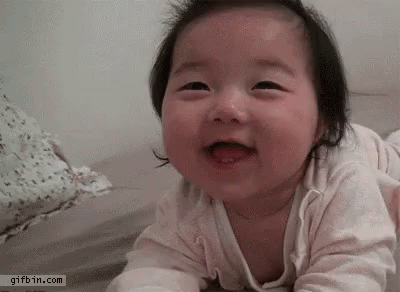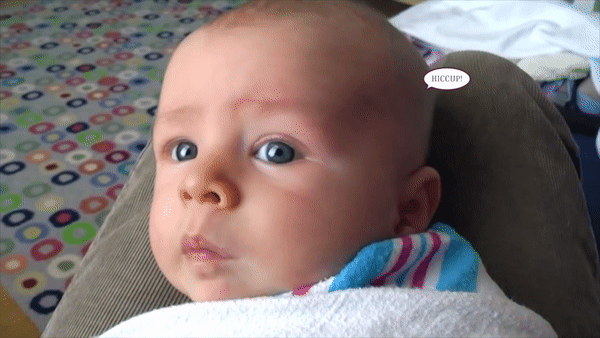These 18 Tell Tale Signs Could Help You Understand Your Baby Better
If you’re a parent, you’ll know full well how nerve-wracking those few months of having your new little one at home with you are!
That’s not to say that parenting isn’t nerve-wracking for the next 18 years of their life and beyond, but those very first months of being a new Mom or Dad must be absolutely terrifying! Personally, I’d be too scared to even HOLD my child for the first few weeks, in case I broke it!

So naturally, in this tense and apprehensive state, new parents are bound to have a whole load of fears about their new bambino. So, they’re likely to try and play the guessing game as to what their new child really wants and needs from their body language…which, let’s be honest, is no easy task!

So how do you understand your child who can’t communicate with words? Well, child experts have outlined the three main methods on how we adults can communicate with our babies….and it’s pretty wonderful!
Advertisement
1. METHOD NO. 1 – The Way They Cry

Of course, crying is the main way that our babies communicate with us, especially for the first four months of their life…so how do we distinguish those cries from hunger? pain? or something else?
Well…
1. A calling cry

Nope, it’s nothing to do with mobile phones…
The calling cry is indicative of the baby being alone for a very long time and now they want Mommy or Daddy to pick them up. They will continuously cry for 5-6 seconds and then pause for 20 seconds as if they’re waiting for the results. If the parent doesn’t come running, then this cycle will repeat several times until the crying becomes continuous.
Advertisement
2. A hunger cry

It could start with a calling cry but if the baby wasn’t picked up and fed, the cry will continue and become hysterical. The baby might also keep rotating their head, making smacking sounds with their mouth.
I think if I were still a baby, this would be my default setting until someone fed me pizza…
Advertisement
3. A painful cry

This crying will exhibit itself as monotonous, loud, and constant. Periodically, there will be hysterical bursts indicating that the pain has increased. However, if the baby is getting sick, their cry can also be monotonous, but quiet, because they don’t have enough strength to make loud noises.
Oh, bless them…I can imagine that this is the cry that no parent wants to hear…
Advertisement
4. A psychological process cry

Gas, urination, or defecation can initially cause discomfort in a child. This type of crying resembles whining and squeaking.
Don’t we all make those noises when we’re gassy, though!? I know I do!
Advertisement
5. A sleepy cry

When a baby wants to sleep, but can’t fall asleep for some reason, their cry will sound like an offended and smooth whining, followed by yawning. The baby will also rub their eyes and ears.
An offended and smooth whining!? That’s how I sound all the time!? Although to be fair, I am sleepy all the time too, so it makes sense, I guess!
Advertisement
6. A cry of discomfort

This crying is irritated and intermittent and is often accompanied by fidgeting. The baby can also flail and arch. It means it’s high time to check their diaper or they might be feeling too cold or too hot in their clothes.
Advertisement
But overall, it’s important to remember that very tiny babies may cry when they want to change their environment or when they are frustrated or bored, so always take their cries as an urgent warning sign that they need something.
2. METHOD NO. 2 – The sounds they make!
An Australian paediatrician named Priscilla Dunstan has been studying and researching early childhood sounds (up to 3-4 months old) for more than 20 years.
She discovered that after turning 4 months old, babies start to make sounds seeking communication which relate more to physical needs.
Priscilla has now opened her own school teaching new parents to understand their babies. It’s thought that the ability to recognize these sounds in time can actually prevent an upcoming crying episode…which is always a good thing!
Advertisement
Her ’dictionary’ of the main sounds includes:
1. ’Neh’ – “I’m hungry!”
This sound is produced when the baby pushes their tongue up to the roof of their mouth and is triggered by the sucking reflex.
Sounds like the equivalent of us adults drooling whenever we pass a drive-thru…!
Advertisement
2. ’Eh’ – “I’m gonna burp!”

This cute sound is formed when excess air starts to leave the baby’s oesophagus and the baby tries to reflexively release it from their mouth.
Oh well, at least babies give us a warning before passing gas, unlike some people!
Advertisement
3. Owh’ – “I’m sleepy or tired!”

The baby produces this ’sound of tiredness’ by folding their lips before yawning.
& There’s nothing cuter than a sleepy baby! Well, apart from a sleepy cat, of course!
Advertisement
4. ’Heh’ – “I’m feeling uncomfortable!”

Unpleasant tactile sensations make the baby move and jerk their hands and feet. All these movements contribute to producing the ’Heh’ sound, especially when the baby’s mouth is slightly opened.
So, basically, the telltale sign that your baby has had enough of your sh*t!
Advertisement
5. Eairh’ – ’I have gases and pain in my tummy!’

The sounds they make get distorted and turn into a moan when a baby strains their tummy and exhales while trying to get rid of the pain.
& If you have any idea what these noises would actually sound like in real life, then you’re cleverer than I am! Although, that wouldn’t be hard to be fair!
& Finally…
Advertisement
3. METHOD NO.3 – The movements they make

Being aware of your child’s natural body language can help ten-fold in trying to decipher what they want or need! For example, if your baby is…
Advertisement
1. Arching their back

Babies that are under 2 months old often make this movement when responding to pain and colic. If a baby arches their back after eating, it means that they are full. If you often see your baby doing this movement during eating, it can be a sign of reflux. If the baby is older than 2 months old, this movement usually indicates tiredness and a bad mood.
So all I need to do to warn people of my bad mood is arch my back!? I think I’ll start going to Yoga!
Advertisement
2. Rotating their head

This is a calming movement for the baby. They might do it before falling asleep or when they’re around unknown people, so it’s certainly nothing to worry about!
Advertisement
3. Grabbing their ears

In most cases, this movement shows that the baby is just exploring their body. You should consult the doctor only if this movement is followed by crying and repeats often, as it could be a sign that their ears are painful or blocked with wax.
Advertisement
4. Clenching their fists

This is a sign of hunger. If you manage to notice it in time, you can prevent the crying caused by them being hungry.
So, NOW we know the real reason why that meme baby was always clenching his fist!?
Advertisement
5. Lifting their legs
This is the sign of colic and tummy pain. The baby is trying to reflexively ease the pain.
I may try this move the next time I have a takeaway!
Advertisement
6. Jerking their arms

This movement means that the baby got frightened. A loud sound, bright light, or sudden awakening can provoke the startle reflex. In this case, the baby needs to be comforted.

Overall, Paediatricians recommend talking with your baby as often as possible, explaining and showing them everything in their environment, even if it seems that they don’t understand anything yet. It will help them to quickly start to communicate with loved ones using individual sounds and gestures, and it also helps them develop better.
Advertisement
But as always, if you have ANY concerns at all about your child’s well being, health or behaviour, then always consult a professional as soon as possible!
Happy parenting!

The post These 18 Tell Tale Signs Could Help You Understand Your Baby Better appeared first on Go Social.

No comments: